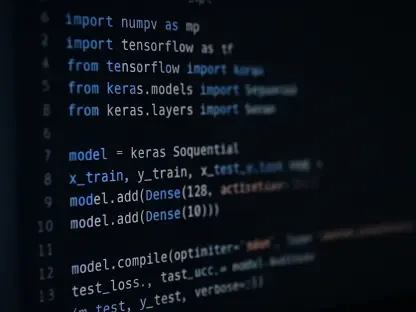The ongoing debate about memory safety in programming languages has gained significant traction in recent years. With the persistent security issues posed by C and C++, many experts advocate for transitioning to memory-safe languages (MSLs) like Rust, Java, and Python. This article delves into the reasons behind this push, the challenges involved, and the initiatives aimed at facilitating this transition.
The Case Against C and C++
Memory Safety Vulnerabilities
Memory safety vulnerabilities are a major concern in software development. C and C++ are particularly prone to issues like buffer overflow, out-of-bounds read/write, and use-after-free bugs. These vulnerabilities can lead to severe security breaches, allowing attackers to access sensitive data or inject malicious code. Such vulnerabilities stem from the manual memory management required in C and C++, making these languages inherently riskier compared to MSLs.
Exploiting these vulnerabilities, threat actors can gain unauthorized access to systems or execute arbitrary code, which can wreak havoc on affected software. Buffer overflows, for example, occur when more data is written to a buffer than it can hold, causing data to overwrite adjacent memory, potentially leading to code execution. Similarly, use-after-free bugs, where code accesses memory after it has been freed, can be exploited for similar malicious purposes. These types of vulnerabilities represent a significant portion of security flaws found in software today.
Industry Statistics
Statistics from major tech companies highlight the severity of the problem. Microsoft engineer Matt Miller reported that around 70% of all software vulnerabilities in Microsoft’s security updates were related to memory safety. Similarly, Google’s 2023 analysis found that 75% of CVEs used in zero-day exploits targeted memory safety vulnerabilities. These figures underscore the urgent need for a shift to MSLs, as they illustrate just how prevalent and dangerous these vulnerabilities are.
The fact that such a substantial proportion of vulnerabilities are tied to memory safety reveals the critical nature of this issue. Without addressing the root cause of these security flaws, software remains vulnerable to exploits that can result in significant breaches and data compromises. This has driven many cybersecurity professionals and industry leaders to advocate for the adoption of MSLs, which offer built-in safeguards against these common vulnerabilities.
Increasing Awareness and Recommendations
Government and Agency Recommendations
Agencies like the National Security Agency (NSA) have been vocal about the need to transition to MSLs. The NSA, along with international partners, has consistently recommended adopting these languages to mitigate security risks. This growing global consensus reflects the critical importance of addressing memory safety vulnerabilities. Recommendations from such authoritative bodies add substantial weight to the argument for transitioning away from memory-unsafe languages.
The NSA’s guidance is particularly influential, given its focus on national security and its extensive experience with cybersecurity threats. By urging the adoption of MSLs, the NSA emphasizes the strategic importance of memory safety in safeguarding sensitive information and protecting critical infrastructure. This endorsement from a major security agency highlights the severity of the issue and the necessity of proactive measures to bolster software security.
Industry Support
The push for MSLs is not limited to government agencies. Tech giants like Google and Microsoft are also advocating for this transition. Their support lends significant weight to the argument, as these companies have extensive experience dealing with the repercussions of memory safety issues. Both firms have invested significant resources in identifying and mitigating vulnerabilities in their software, leading them to recognize the benefits of adopting MSLs.
Google, for instance, has been a strong proponent of Rust, highlighting its potential to reduce memory safety issues. Microsoft has similarly begun integrating Rust into some of its projects, acknowledging the advantages of using MSLs in building more secure software. With tech industry leaders championing this cause, the call for transitioning to MSLs is amplified, drawing more attention to the imperative need for change.
Transition Challenges
Skill Gap and Training
One of the primary challenges in transitioning to MSLs is the skill gap among programmers. Many developers are proficient in C and C++, but not in newer, memory-safe languages. This necessitates comprehensive training programs to upskill the workforce, which can be time-consuming and costly. The widespread use of C and C++ across various domains means that many existing codebases and legacy systems are written in these languages, further complicating the transition.
Training programs must cover not only the syntax and structure of MSLs but also the theoretical foundations of memory safety and secure coding practices. This dual focus is crucial to ensure that developers do not simply learn new languages, but also internalize security-first principles that will guide their future coding endeavors. Organizations need to prepare for this transition by investing in long-term educational initiatives that can seamlessly integrate new technologies without disrupting current operations.
Efficiency and Performance Concerns
Another hurdle is the potential efficiency hit during the learning curve. Transitioning to a new language can initially slow down development processes, impacting productivity. Organizations must weigh these short-term inefficiencies against the long-term benefits of enhanced security. While MSLs can help develop more secure software, the immediate effects on workflow and output during the adaptation period cannot be overlooked.
Addressing these performance concerns involves setting realistic expectations and timelines for the transition. Organizations must recognize that the temporary decrease in development speed is a necessary investment for long-term gains in security and stability. Furthermore, optimizing the learning process through structured support and continuous feedback can help mitigate the impact on productivity. Ultimately, the focus should be on the lasting advantages of adopting MSLs, including reduced vulnerability rates and a more secure software ecosystem.
Technological and Organizational Initiatives
DARPA’s TRACTOR Program
To alleviate the transition burden, initiatives like DARPA’s TRACTOR program are leveraging AI to automate parts of the code translation process. This can significantly reduce the manual effort required to migrate existing codebases to MSLs, making the transition more feasible. By using AI-driven tools, organizations can streamline code conversion processes, thereby minimizing disruption and easing the workload on developers.
The TRACTOR program aims to develop advanced machine translation systems that can accurately and efficiently convert code from memory-unsafe languages to MSLs. This approach addresses one of the most challenging aspects of the transition—the manual rewriting of extensive codebases. By automating significant portions of this task, TRACTOR allows for a smoother transition, enabling organizations to focus on refining and optimizing the newly generated code rather than starting from scratch.
Google’s Dual Approach
Google has outlined a “two-pronged” approach to address memory safety issues. This involves encouraging the adoption of MSLs for new projects while simultaneously enhancing the resilience of existing C++ codebases. This balanced strategy aims to mitigate risks without disrupting ongoing development. By improving the security of their existing code and promoting the use of MSLs in future projects, Google exemplifies a practical method for navigating the transition period.
The first prong of Google’s strategy emphasizes incorporating MSLs like Rust into new software projects, leveraging their intrinsic memory safety features to prevent vulnerabilities from emerging. The second prong focuses on fortifying current C++ codebases with additional safety measures, such as implementing static analysis tools and memory safety checkers, to reduce the likelihood of exploits. This comprehensive approach underscores the need for both proactive and reactive measures in securing software against memory safety vulnerabilities.
Developing a Security Culture
Security-First Development Practices
Transitioning to MSLs also requires fostering a culture of security-first development practices among programmers. This involves organizational investments in upskilling developer teams and prioritizing the use of memory-safe languages in new projects. A security-first mindset is crucial for managing the transition effectively. Companies must commit to ongoing education and reinforcement of secure coding practices to ensure that the shift to MSLs is not just a technical change but a cultural one as well.
Adopting a security-first approach means integrating security considerations into every stage of the software development lifecycle. From initial design to final deployment, security needs to be a core aspect of decision-making and implementation. Encouraging developers to adopt this mindset can lead to more resilient software and reduce the overall incidence of vulnerabilities. By embedding security into the organizational culture, companies can foster a proactive stance toward memory safety, enabling a smoother and more effective transition.
Organizational Investments
Organizations must invest in robust training programs to equip their developers with the necessary skills to work with MSLs. This includes not only technical training but also fostering an understanding of the importance of memory safety in software development. These programs should be designed to address both the practical aspects of coding in MSLs and the theoretical underpinnings of secure software design.
Effective training initiatives can take various forms, including workshops, online courses, and mentorship programs. By providing developers with access to comprehensive educational resources and continuous support, organizations can facilitate a smoother transition to MSLs. Additionally, investing in training reinforces the commitment to security and professional development, which can improve morale and retention among employees. A well-rounded, educated workforce is essential for successfully navigating the shift to memory-safe programming languages.
The Path Forward
Strategic Planning and Execution
Successfully transitioning to memory-safe programming languages requires strategic planning and execution. This involves recognizing the technical debt and performance issues of legacy systems coded in C and C++, and addressing the skill gap through targeted training programs. Careful planning can help organizations manage the complexities of the transition and set realistic timelines and goals.
Effective execution requires a comprehensive approach that includes evaluating current systems, identifying critical vulnerabilities, and prioritizing the most impactful changes. By developing a clear strategy, organizations can allocate resources efficiently and track progress, ensuring that the transition to MSLs is both systematic and measurable. This methodical approach can help mitigate risks and maximize the long-term benefits of adopting memory-safe languages.
Multi-Layered Efforts
The ongoing debate surrounding memory safety in programming languages has become increasingly prominent in recent years. Persistent security vulnerabilities in languages like C and C++ have fueled this discussion, prompting many experts to call for a transition to memory-safe languages (MSLs) such as Rust, Java, and Python. This push is rooted in the numerous benefits that MSLs offer, including enhanced security and robustness. For instance, Rust’s stringent compile-time checks and ownership model significantly reduce the risk of memory-related errors, while Java’s automatic garbage collection system alleviates many of the issues seen in unmanaged languages.
However, the shift to MSLs isn’t without its challenges. Legacy code written in C and C++ often forms the backbone of critical systems, making complete rewrites resource-intensive and time-consuming. Additionally, there is a learning curve for developers accustomed to traditional languages.
Despite these hurdles, several initiatives are underway to ease this transition. Companies and open-source projects are actively developing tools and frameworks to facilitate the integration of memory-safe code, fostering a safer and more secure programming landscape.









